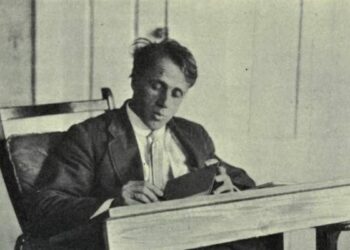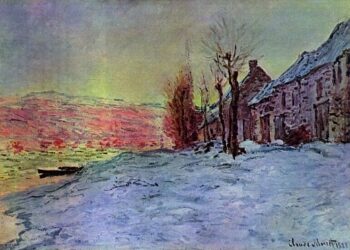Table of Contents
ToggleIntroduction
The Armadillo Summary And Themes By Elizabeth Bishop The Armadillo is a poignant and highly evocative poem by Elizabeth Bishop, one of the most significant American poets of the 20th century. Written in 1960, the poem reflects Bishop’s characteristic style—blending vivid imagery, emotional depth, and an acute sense of observation. Bishop is known for her ability to capture the details of the natural world and human existence with precise language, often drawing on her travels and experiences in different parts of the world.
In The Armadillo, Bishop explores themes of fragility, destruction, and the interaction between humans and nature. The poem is set against the backdrop of a fireworks display, an event that, while meant to be a celebration, becomes the catalyst for an exploration of violence and the unintended consequences of human action. At the center of the poem is the armadillo, a creature that is caught in the chaos of the celebration. Its response to the fireworks becomes a metaphor for the vulnerability of nature in the face of human interference.
The poem is complex and layered, using the simple image of an armadillo to reflect on broader themes of life, death, and the delicate balance between nature and human activity.
Summary of The Armadillo by Elizabeth Bishop
The Armadillo begins with a description of a firework display. The poem’s speaker sets the scene in a location where the sky is lit up by the fireworks, which are described with a sense of vibrancy and intensity. However, the excitement and beauty of the display are quickly overshadowed by the presence of an armadillo, a small creature that becomes caught in the chaos of the fireworks.
The armadillo, in the poem, represents the vulnerability of nature in the face of human actions. The fireworks, which are intended to be a celebration for humans, cause terror and confusion for the armadillo. The creature, which would normally be part of the natural landscape, is displaced by the spectacle. Its response to the fireworks is described with a sense of fear and helplessness, suggesting that the armadillo is out of its depth in a world that is no longer governed by the rhythms of nature but by human-created chaos.
Read more
As the firework display continues, the armadillo is caught in the blast and suffers the consequences of the violence unleashed by the fireworks. Bishop’s imagery evokes the idea that the armadillo, once a part of the tranquil and predictable natural world, is now subject to forces it cannot control. The creature’s vulnerability becomes a powerful symbol of the fragility of life and the destructive power of human intervention.
The poem culminates in a moment of reflection, where the speaker contemplates the destruction that has occurred. The firework display, meant to be a source of joy and celebration for humans, has resulted in harm to a living creature. The armadillo’s fate serves as a metaphor for the impact of human actions on nature, and Bishop’s choice to end the poem without any resolution or redemption further underscores the theme of inevitable destruction.

Themes in The Armadillo by Elizabeth Bishop
1. The Fragility of Life
The most prominent theme in The Armadillo is the fragility of life. Throughout the poem, Bishop emphasizes the vulnerability of the armadillo, a creature that is ill-prepared for the violent and overwhelming display of human fireworks. The armadillo’s reaction to the fireworks—its fear and its eventual destruction—serves as a powerful reminder of the tenuous nature of life. The armadillo, with its soft, vulnerable body, represents all living creatures that are at the mercy of forces beyond their control.The Armadillo Summary And Themes By Elizabeth Bishop
Bishop’s portrayal of the armadillo’s fragility also extends to the natural world as a whole. By juxtaposing the delicate creature with the overwhelming spectacle of the fireworks, she highlights the way in which nature can be disrupted by human activity. The natural world, which operates according to its own laws and rhythms, can be easily disturbed by human intervention, much as the armadillo is disturbed by the fireworks. This theme of fragility suggests that life is precarious and that destruction can come suddenly and without warning.The Armadillo Summary And Themes By Elizabeth Bishop
Read more
2. Human Impact on Nature
Another key theme in the poem is the impact that human activities have on nature. The fireworks, created for human enjoyment, become the source of harm for the armadillo. The armadillo is unable to escape the destructive effects of the fireworks, which are not meant to hurt it, but nonetheless do. This underscores the ways in which human actions often have unintended and harmful consequences for the natural world.The Armadillo Summary And Themes By Elizabeth Bishop
Bishop’s portrayal of the armadillo’s suffering also speaks to the broader theme of environmental destruction. While the humans who are setting off the fireworks are oblivious to the harm caused to the animal, the creature’s experience of terror and death serves as a reminder that the natural world is often at the mercy of human activities. In this way, The Armadillo critiques the disregard for nature that is common in human behavior, urging readers to consider the unintended consequences of their actions on the environment.
3. Destruction and Mortality
The theme of destruction is central to the poem, as it follows the path of the armadillo from its peaceful existence to its tragic fate. The fireworks, which are initially described as beautiful and bright, ultimately cause the death of the armadillo. This shift from celebration to destruction mirrors the unpredictable nature of life itself—where moments of beauty can quickly turn into moments of violence and loss. The death of the armadillo is presented as an inevitable outcome, suggesting that destruction and mortality are inherent aspects of existence.
Bishop does not offer any redemption or resolution to the tragedy; instead, the armadillo’s death serves as a stark reminder of the fragility of life and the randomness of fate. In this way, the poem underscores the idea that death is an unavoidable part of the natural order, whether it is caused by human action or natural forces.
4. The Role of Fireworks as a Metaphor
The fireworks in The Armadillo play a dual role as both a symbol of human celebration and a force of destruction. Initially, the fireworks represent joy and festivity, something that is intended to bring pleasure. However, as the poem unfolds, the fireworks take on a darker meaning, serving as a metaphor for the destructive power of human inventions. The armadillo, which is forced to endure the violence of the fireworks, symbolizes the vulnerability of nature in the face of human-created chaos.The Armadillo Summary And Themes By Elizabeth Bishop
The fireworks also serve as a reminder of the way in which beauty and violence can coexist in the world. While they are dazzling and awe-inspiring in appearance, they are also loud and disruptive, creating a sharp contrast between their beauty and their potential for harm. Through the imagery of the fireworks, Bishop explores the tension between creation and destruction, between celebration and loss.The Armadillo Summary And Themes By Elizabeth Bishop

Conclusion
In The Armadillo, Elizabeth Bishop explores deep and resonant themes about the fragility of life, the impact of human activity on nature, and the inevitability of destruction. Through the metaphor of the armadillo, she reflects on the vulnerability of creatures caught in the chaos of human-made events.The Armadillo Summary And Themes By Elizabeth Bishop
The poem serves as a poignant reminder of the delicate balance between humans and the natural world, urging readers to consider the consequences of their actions and to reflect on the fragility of all life. Bishop’s ability to weave intricate imagery with profound emotional depth makes The Armadillo a powerful exploration of life, death, and the complex relationship between humans and the environment.
Read more
(FAQ)
1. What is the central theme of The Armadillo?
The central theme of The Armadillo is the fragility of life and the destructive impact of human activity on nature. Through the image of the armadillo being caught in the chaos of a fireworks display, Bishop explores the vulnerability of living creatures and the unintended consequences of human actions on the natural world.The Armadillo Summary And Themes By Elizabeth Bishop
2. How does Bishop use imagery in The Armadillo?
Bishop uses vivid and detailed imagery throughout the poem to create a sensory experience for the reader. She describes the fireworks, the armadillo’s reaction, and the violence of the event with precise language, drawing the reader’s attention to the stark contrast between human celebration and the harm caused to nature. The imagery of the fireworks serves as both a symbol of beauty and destruction, adding depth to the poem’s themes.
3. What role does the armadillo play in the poem?
The armadillo in the poem represents the vulnerability of nature and the fragility of life. It is a symbol of the delicate balance of the natural world, and its suffering at the hands of the fireworks highlights the ways in which human activities can harm creatures that are otherwise innocent and unaware of the chaos created by humans.
4. How does The Armadillo reflect Bishop’s overall style?
The Armadillo reflects Bishop’s style of blending detailed observation with emotional depth. She often uses the natural world as a metaphor for larger human experiences, and in this poem, she captures the vulnerability of the armadillo with precision while also evoking complex themes of destruction and mortality.
5. What is the significance of the fireworks in the poem?
The fireworks in the poem are significant because they symbolize both the celebration of human achievement and the violence that can result from human actions. Initially, they are associated with joy and festivity, but as the poem progresses, they represent the destructive forces humans can unleash, even unintentionally, upon the natural world.The Armadillo Summary And Themes By Elizabeth Bishop
Read more

















